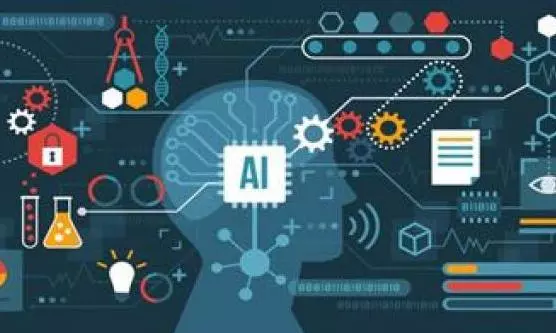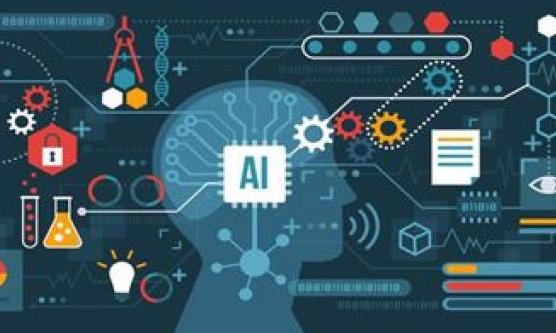
Hyderabad: For understanding a patient’s illness, a doctor typically analyses several physiological indicators as well as reports generated following diagnostic tests.
The advent of artificial intelligence (AI), however, is set to change the practices in vogue since decades. AI can correlate the patient’s symptoms and diagnostic results using health records in the database to identify the cause of illness within a few seconds — helping the doctor to save time and increase operational efficiency of a hospital.
According to a comprehensive report published in August by the Indian School of Business (ISB), AI’s real transformation in healthcare is in patient care and clinical research.
In medical imaging, it accelerates diagnosis, while in surgeries, AI-driven robotics enhance precision. During the pandemic, AI played a critical role in tracking outbreaks and assisting in treatment planning. Initiatives such as Wadhwani AI’s media scanning solution for disease surveillance and Artelus’s image recognition for early diagnosis highlight the technology’s versatility.
The doctor to patient ratio is abysmally low in rural India, with one doctor having to treat 2,000 people. The advent of AI is a morale-booster for doctors. The central government is reportedly keen on promoting AI applications in the healthcare sector. Several state governments are investing heavily in AI rollout in the healthcare sector.
An advanced healthcare AI can help the government or private hospitals to roll out telemedicine to make healthcare more accessible, especially in remote regions.
AI can also revolutionise preventive healthcare as it can identify patterns early, which will help the doctors to begin treatment at the earliest.
In 2022, the Indian healthcare industry was estimated to be worth $372 billion. It is expected to grow at around 20 per cent till 2030. The use of AI will propel the growth rate.
But how does AI work and how does one deploy AI for healthcare purposes?
AI uses various advanced technologies such as machine learning, natural language processing (NLP), expert systems, and image and signal processing for diagnosis.
Machine learning automates data analysis to identify patterns, while NLP aids in processing medical records and transcription. Expert systems, on the other hand, specialise in solving specific problems like diagnosing chronic conditions. Image and signal processing refine medical imaging data, allowing for accurate and timely diagnosis.
NITI Aayog has deployed AI for early detection of diabetes and eye-related ailments. Radiology was among the first fields to adopt AI.
Startups like Dozee, which developed India’s first AI-powered remote patient monitoring system, and Augnito, a speech recognition tool for medical transcription, are setting benchmarks in healthcare innovation.
IIIT Hyderabad is also using AI for detecting sleep quality and sleep-related disorders.
While AI can study sleep stages to precise levels, deep learning (DL) can automate the sleep stage data through supervised and unsupervised learning models, said Prof. S. Bapi Raju, lead researcher and head of Cognitive Sciences Lab at IIIT Hyderabad.
AI could be a boon for remote ICU assistance, says Dr D.V.R. Seshadri, director, centre for business markets, ISB.
“Once a technology such as the one for remote ICU assistance (CloudPhysician), breast cancer detection (Niramai) or scanning through millions of x-rays to detect TB are scaled up, many companies will inevitably spring up to deploy these technologies on a massive scale,” he said.
However, the widespread adoption of AI in healthcare is not without challenges.
A lack of comprehensive electronic health records (EHR) and high infrastructure costs are the hindrances. There is also a significant skill gap, as professionals proficient in both healthcare and AI, are scarce. Additionally, concerns about data privacy, accountability, and ethical use persist.
An even wider concern is the possibility of AI replacing doctors.
However, Dr Seshadri allayed these concerns: “This is very unlikely in the foreseeable future. At the end of the day, the patient would like the assurance of a human doctor. While AI tools may be leveraged to enhance the efficacy of the doctors, it cannot replace doctors any time soon.”
“There is convergence of multiple disciplines happening on a massive scale. It may be hard to isolate the application of AI in disease surveillance from its other applications. The regulatory systems to prevent such convergence typically lag behind the application of these technologies, and hence we cannot rule out the misuse of AI technologies in healthcare for purposes other than what was originally intended,” Dr Seshadri explained.
AI applications in healthcare:
AI uses various advanced technologies such as machine learning (ML), natural language processing (NLP), expert systems, and image and signal processing for diagnosis.
Machine learning automates data analysis to identify patterns, while NLP aids in processing medical records and transcription.
Expert systems, on the other hand, specialise in solving specific problems like diagnosing chronic conditions. Image and signal processing refine medical imaging data, allowing for accurate and timely diagnosis.
